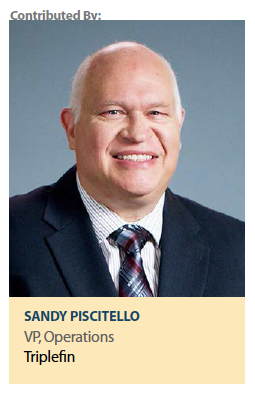Many of us are watching with fascination and concern as payers decide to exit certain markets in 2017, based on the economics of delivering care in specific states. Meanwhile, there’s another payer trend that is just as important for manufacturers to follow closely — payer formulary adopti on of products that require both medical and pharmaceutical benefits. Brand uptake, or the lack of it, is at stake for manufacturers that are not proactively addressing this trend, and as products continue to evolve, there is market pressure to create new payer coverage models.
on of products that require both medical and pharmaceutical benefits. Brand uptake, or the lack of it, is at stake for manufacturers that are not proactively addressing this trend, and as products continue to evolve, there is market pressure to create new payer coverage models.
Why is dual reimbursement growing?
Three key trends have contributed to the growth of dual reimbursement: First, many products that were once specialty products requiring infusion or in-office administration by a healthcare professional are now formulated for oral delivery or dosing in a patient’s home. A patient now managing a chronic condition through self-injection at home will be subject to a medical charge for the disposable injectable supplies plus the pharmacy charge for the medication he or she receives. Second, the growing use of medical devices that incorporate durable medical equipment plus the medication again triggers dual reimbursement. The third major trend driving mixed reimbursement is the emergence of products that have undefined reimbursement strategies, such as customized biologics tailored to a patient’s individual DNA. Treatment with these types of personalized medicine will often include pre-treatment lab testing, a medical device, plus medication, along with multiple cycles of treatment, assessment and refinement. While outcomes can be improved for patients receiving highly individualized care, even as these cutting-edge products go to market, the brand will frequently launch with an undefined reimbursement code.
With each of these three trends, the use of mixed reimbursement increases. Add to this the current pattern of cost shifting to patients, with the ongoing use of step edits and prior authorizations by payers, and the barriers to access continue to grow.
While advances in medical technology, the growth of oral formulations and personalized medicine are causes for optimism, manufacturers need to address the very real market pressures in payer coverage models.
How can manufacturers respond?
In response to the pressure payers face today, astute manufacturers will organize their resources to address the dual goals of lower cost of care and faster access to therapy. Many pharmaceutical companies are gearing up for this: a recent Accenture study of manufacturers finds that nearly all pharma companies (95%) plan to invest in patient engagement technologies in the next 18 months.
In a nutshell, it’s all about access and how manufacturers can facilitate the process, beginning with digital solutions for benefit verification. Historically a time consuming and costly process, payers will appreciate manufacturers that invest in electronic benefit verification (EBV) tools that encompass both medical and pharmacy claims for a specific therapeutic treatment. A good EBV should integrate with a healthcare provider’s workflow. In an ideal scenario, a healthcare provider enters relevant patient information at the start of treatment and that data would follow the patient throughout treatment progression. Depending on the particular therapy, a robust EBV tool might need to include electronic prior authorization and step edit processing, as well as generate customized Explanation of Benefit (EOB) and Explanation of Payment (EOP) letters to the patient and providers respectively. Going a step further, manufacturers might need to provide a robust co-pay card — whether physical or virtual — that will travel with the patient on his or her treatment journey.
A good example of how effective electronic submissions can enhance the patient experience and ease the administrative work of HCPs is a treatment for multiple sclerosis (MS) that requires both monthly infusions along with liver function tests to monitor the treatment’s impact. The process therefore requires both pharmacy submissions for the product that is infused, and medical submissions for the lab test and infusion procedure.
Triplefin worked with a leading manufacturer to design an electronic patient co-pay card that covers up to a year’s worth of lab tests needed for the ongoing MS treatment. At the start of treatment, patients are issued a virtual ID card which enrolls them for their upcoming lab tests. The physician’s office can then submit a medical claim on behalf of the patient each time he or she has lab tests related to monitoring his or her MS therapy. With this virtual co-pay card in place, the patient is no longer burdened with managing monthly medical claims submissions each treatment cycle. The physician’s office handles the recurring medical service claims submission at a convenient time, within their normal administrative work flow and this expedites reimbursement.
Triplefin created a customized tool within its Hub-Lite model, to match the manufacturer’s needs. Hub-Lite centers on finding lower-cost, high-performing efficiencies leveraging digital solutions. Hub services can make treatments that require dual reimbursement, such as this ongoing MS therapy, a seamless experience by offering electronic benefits submissions for both pharmacy and medical claims. Hubs can also offer their digital capabilities to send adherence messages to patients and generate an electronic EOB to patients and their providers for the full course of therapy. The result: the burden of multiple administrative tasks was lessened, which allowed for faster prescription uptake and improved adherence.
By harnessing digital solutions, manufacturers can craft comprehensive tools that make the treatment experience simpler for the patient and more manageable for the provider to administer — even when dual reimbursement is involved, which is an outcome that benefits important stakeholders in the healthcare world. (PV)
A leading pharmaceutical brand support company for 33 years, Triplefin removes barriers to patient access and adherence with innovative products and services.
For more information, triplefin.com.


















